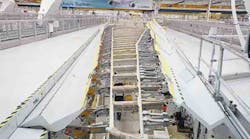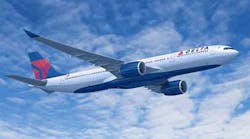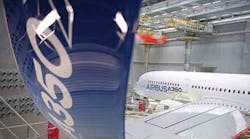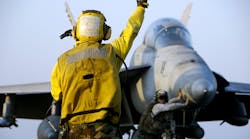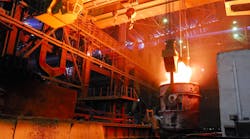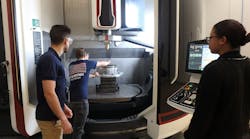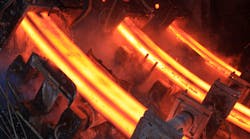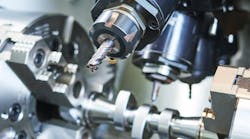Airbus has started manufacturing the wing structures for its A350-1000 commercial aircraft at an assembly plant in Broughton, Wales. The A350-1000 is the largest of three models for the A350-XWB, the twin-engine, wide-body aircraft developed as the OEM’s new long-range passenger jet option, an alternative to Boeing’s 787 Dreamliner.
To date, Airbus has orders for 774 A350 XWB jets, which is designed with extensive application for carbon-fiber materials for the fuselage and wings, to reduce weight and conserve fuel.
The A350-XWB series jets are the first Airbus aircraft with fuselage and wing structures fabricated mainly of carbon-fiber-reinforced polymer. The 213-fit wingspan is the largest ever produced for a single-deck wide-body aircraft, a design factor intended to reduce weight and conserve fuel.
The wing tips curve upward into a saber-tip shape for the last 14 ft., with a 31.9° sweep angle that is intended to increase cruising speed to Mach 0.85 and maximum operating speed to Mach 0.89.
The A350-900 version is in production already, and while A350-1000 wing has the same span as that design, Airbus noted that 90% of the parts have been modified and the wing’s trailing edge has been extended to resize the wing for the additional payload and range.
The OEM claimed the A350 XWB wings make the aircraft faster, more efficient and quieter, while the wing design includes several features that increase the jets’ efficiency at lower speeds. Devices that allow the aircraft to deflect its wing flaps differentially optimize the wing profile and improve load control.
